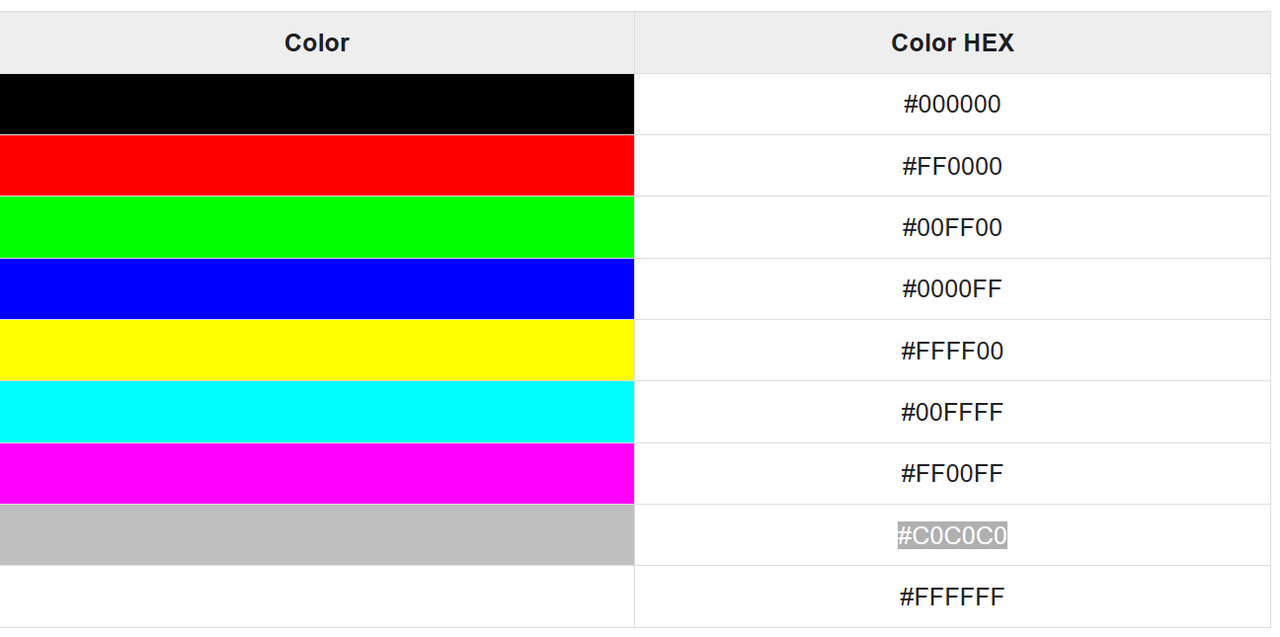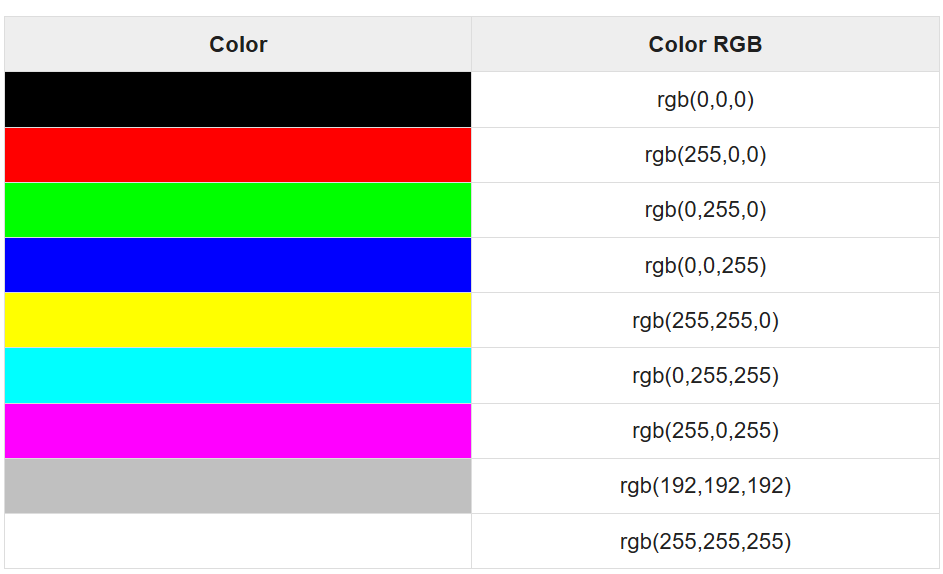.png)
HTML Colors
HTML COLORS
Colors are very important to give a good look and feel to your website. You can specify colors on page level using <body> tag or you can set colors for individual tags using bgcolor attribute.
The <body> tag has following attributes which can be used to set different colors −
· bgcolor − sets a color for the background of the page.
· text − sets a color for the body text.
· alink − sets a color for active links or selected links.
· link − sets a color for linked text.
· vlink − sets a color for visited links − that is, for linked text that you have already clicked on.
HTML Color Coding Methods
There are following three different methods to set colors in your web page −
· Color names − You can specify color names directly like green, blue or red.
· Hex codes − A six-digit code representing the amount of red, green, and blue that makes up the color.
· Color decimal or percentage values − This value is specified using the rgb( ) property.
Now we will see these coloring schemes one by one.
HTML Colors - Color Names
You can specify direct a color name to set text or background color. W3C has listed 16 basic color names that will validate with an HTML validator but there are over 200 different color names supported by major browsers.
HTML Colors - Hex Codes
A hexadecimal is a 6 digit representation of a color. The first two digits(RR) represent a red value, the next two are a green value(GG), and the last are the blue value(BB).
A hexadecimal value can be taken from any graphics software like Adobe Photoshop, Paintshop Pro or MS Paint.
Each hexadecimal code will be preceded by a pound or hash sign #.

HTML Colors - RGB Values
This color value is specified using the rgb( ) property. This property takes three values, one each for red, green, and blue. The value can be an integer between 0 and 255 or a percentage.
Note − All the browsers does not support rgb() property of color so it is recommended not to use it.\

Browser Safe Colors
Here is the list of 216 colors which are supposed to be safest and computer independent colors. These colors very from hex code 000000 to FFFFFF and they will be supported by all the computers having 256 color palettes.
HTML Fonts
Fonts play a very important role in making a website more user friendly and increasing content readability. Font face and color depends entirely on the computer and browser that is being used to view your page but you can use HTML <font> tag to add style, size, and color to the text on your website. You can use a <basefont> tag to set all of your text to the same size, face, and color.
The font tag is having three attributes called size, color, and face to customize your fonts. To change any of the font attributes at any time within your webpage, simply use the <font> tag. The text that follows will remain changed until you close with the </font> tag. You can change one or all of the font attributes within one <font> tag.
Note −The font and basefont tags are deprecated and it is supposed to be removed in a future version of HTML. So they should not be used rather, it's suggested to use CSS styles to manipulate your fonts. But still for learning purpose, this chapter will explain font and basefont tags in detail.
Set Font Size
You can set content font size using size attribute. The range of accepted values is from 1(smallest) to 7(largest). The default size of a font is 3.
Relative Font Size
You can specify how many sizes larger or how many sizes smaller than the preset font size should be. You can specify it like <font size = "+n"> or <font size = "−n">
Setting Font Face
You can set font face using the face attribute but be aware that if the user viewing the page doesn't have the font installed, they will not be able to see it. Instead, user will see the default font face applicable to the user's computer.